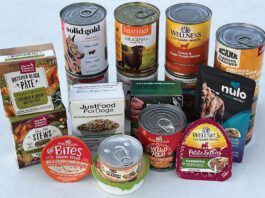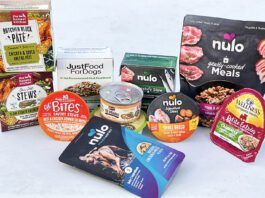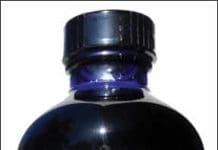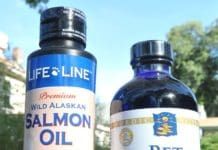How to Make Your Own Top-Quality Dog Treats
Imagine not having to worry about treat recalls or ingredient sources, or, for that matter, whether the actual ingredients match what's on the product label. It's not a dream; in fact, it's well within anyone's abilities. It's easy, it costs less than commercial products, and as an added bonus, you get the peace of mind from knowing these treats won't be recalled. Heck, you have to go grocery shopping anyway, so it shouldn't be a problem to pick up the necessary ingredients while shopping for the other members of your family. Whether you shop at Safeway or Whole Foods, one thing is certain: the quality of the raw ingredients you’ll buy in human grocery stores is far higher than what is used in most commercial treats.
Jerky Treats (and others) Still Making Dogs Ill
rodenticides
The Benefits of Fish Oil to Your Dog’s Health
Fish oil is probably the most important supplement you can add to your dog's diet, regardless of what type of diet you feed. EPA and DHA, the omega-3 fatty acids in fish oil, provide widespread benefits, but they are fragile and unlikely to survive storage in bags of kibble, or may be rancid even before being added to pet foods. Krill oil and whole fish also provide EPA and DHA that may be better absorbed, providing similar benefits in smaller doses.
How to Make Homemade Dog Food
It's important that the home-prepared dog food diet you feed your dog is complete and balanced
Calculating a Dog Food Diets Protein, Fat, Carbs, and Fiber
It is not easy to figure out how much fat and other nutrients are really in the food you feed, whether it's kibble, canned food, or a home-prepared raw or cooked diet. Here are some tips that can help. There are three different ways of measuring amounts of protein, fat, carbohydrates, and fiber in foods.
Excerpts From Hill’s Animal Welfare Policy
All pets cared for by Hill’s Pet Nutrition live in a loving, safe, playful, and clean environment. We use only non-invasive, humane research methods. Hill’s does not participate in studies that jeopardize the health of dogs and cats. No study that requires euthanasia will be performed on dogs or cats. When studying how a nutrient is absorbed, distributed, stored, used and released by a dog’s or cat’s body, we use only research methods that are the veterinary equivalent of human nutritional or medical studies. Hill’s does not support or conduct studies that cause pain or hurt the dogs or cats. This is based on the belief that what is painful to humans is also painful to dogs and cats.
Pet Food Companies and Animal Research: What Do They Do?
In recent years, the pet food industry has discovered the benefit of sharing more information about its products, manufacturing and research and development with consumers. In a highly competitive market, it's advantageous to project a confident image of full transparency - as long as the company is doing everything they say they are doing. In the wake of a substantial amount of bad PR from a nearly decade-old PETA campaign showing conditions of research animals, Whole Dog Journal had the opportunity to conduct extensive tours of two large pet food manufacturers' research facilities.
The Controversy Over BPA-Free Dog Food Containers
On March 30, the U.S. Food and Drug Administration announced that it had rejected a petition from environmentalists that would have banned bisphenol A (BPA) from all food and drink packaging. The scientific evidence at this time, said the FDA, does not suggest that the “very low levels of human exposure to BPA” afforded through our diets are unsafe. “The agency has performed extensive research on BPA, has reviewed hundreds of other studies, and is continuing to address questions and potential concerns raised by certain studies,” the news release continued. “The agency takes all concerns about BPA seriously and is evaluating them as part of the agency’s ongoing oversight of food safety.”
How to Make High Quality Dehydrated Dog Treats for Raw Fed Dogs
Making meals from scratch is the only way I know to have exactly what I want for my dogs no ingredients from places with spotty records for quality assurance, no multi-syllabic additives making a label longer than I like. After I covered the pet-food recall in 2007, I changed the way I eat and the way I feed my pets. For my dogs, that meant commercial products from companies I trusted, along with raw-food meals from regional sources of meat, grains, and vegetables. It wasn't a huge shift from raw to cooked when my Flat-Coated Retriever, McKenzie, started chemotherapy for soft-tissue sarcoma a few days after her seventh birthday. At the suggestion of her veterinary oncologist, I dropped the carbs, rebalanced the diet with the help of some expert advice, and started feeding McKenzie Meatloaf" to all three of my dogs."
Wait for Your Food Bowl
With your dog sitting at your side, hold her food bowl at chest level, and tell her to “wait.” Move the bowl (with food it in, topped with tasty treats) toward the floor 4 to 6 inches. If your dog stays sitting, click your clicker and feed her a treat from the bowl. If your dog gets up, say “Oops!” and ask her to sit again. If she remains sitting, lower the bowl 4 to 6 inches again, click and treat.
Improving Upon Your Homemade Raw Dog Food Recipes
Bill and Marin Corby of Romeo, Michigan, feed a homemade dog food diet to their two rescued Cockapoos. Max, estimated to be anywhere from 6 to 9 years old, has been with them for three and a half years. Max weighed 32 pounds when first adopted, but his current weight is a healthy 20 pounds. Mickey was four months old and very sick when they first brought him home, as he had problems digesting his food. The Corbys switched Mickey to a raw dog food diet, and he’s now thriving at 20 months of age and 16½ pounds.
Could a Raw Dog Food Diet Replace the Need to Brush?
Many raw dog food diet proponents claim that the nutrients and/or chemical composition of a raw diet keeps dogs from developing gingivitis or periodontitis. We’re not aware of any studies that have proven these claims, but the persistence of the anecdotal evidence of this phenomenon (to say nothing of its evolutionary success) suggest that there are dental benefits to a diet that includes raw, meaty bones.
















